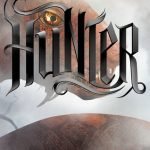The Grey King had been recommended to me some time ago by a lover of high fantasy. Since it’s a Newbery Medal winner, I was willing to try it out, and if I liked it, I’d read the whole series: The Dark Is Rising Sequence.
My fellow Scriblerian, Tim, will not be happy with me. And no, he was not the one who recommended that I read the series.
I can see why it won the Newbery back in the Seventies, but as a Christian, I had trouble with it. A disturbing trinity of Lords most definitely does NOT represent the Father, Son, and Holy Spirit as I would expect Christian-based fantasy to symbolize. I found the concept of “Old Ones” confusing –in this case, a young boy who truly has been born into a family, but his soul is “old”—it smacks of reincarnation. So if I found it confusing, what goes on in the minds of young readers as they take in this world of fantastical spirit mixed with humanity?
Synopsis
Of course, the setting is Wales, with lots of unintelligible spellings, swirling mists, and magical doors. Thank goodness the main characters have simple names like Will, Bran, and John. It is up to young Will, the last born of the Old Ones, to save the world from the forces of evil led by the Grey Wolf. To succeed, Will must wake up Six Sleepers with a magical golden harp. The humans are unaware of the danger except for Bran, a boy close to Will’s age who was transported through time by another of the Old Ones.
Pros
- Loads of action for boys’ tastes. (Have you ever noticed that girls are happy to read action stories, but boys rarely peruse a sweet romance?)
- Susan Cooper spends a good deal of time teaching her readers how to pronounce Welsh words. I’ve never understood Welsh phonics, so I had a great time sounding out words as I learned the rules.
- Spoiler: the good guys win. On to the next book of the series, Silver on the Tree.
Cons
- If you are a parent wanting easily identifiable, Christian symbolism for your child to understand, you won’t get it here.
- With forty-plus years of high fantasy novels following The Dark Is Rising Sequence, the plot may seem trite to twenty-first century readers.
Conclusion
The vocabulary is geared toward the more capable reading ability, and definitely not for anyone under the age of nine. Because the writing is so good, I won’t pan the series, but if my sons had read the book, I would’ve wanted to discuss it chapter by chapter.

















 indomitable human spirit in the midst of tragedy.
indomitable human spirit in the midst of tragedy.
 Discussion Questions
Discussion Questions


